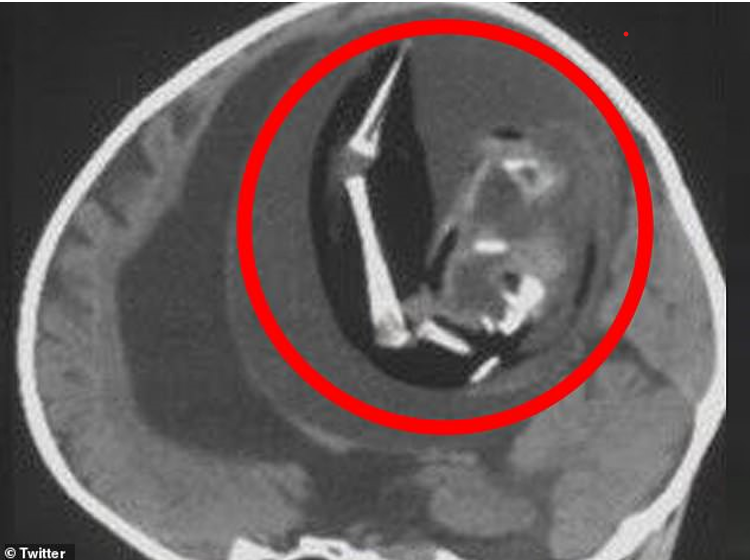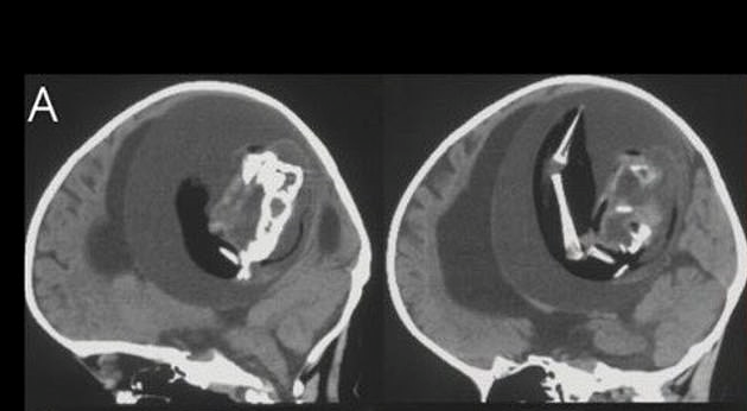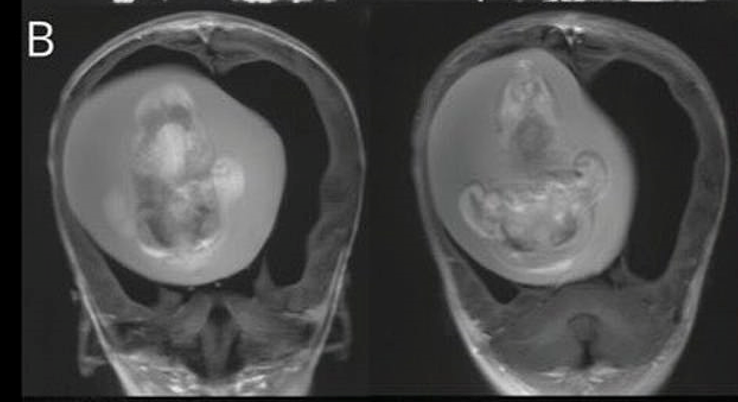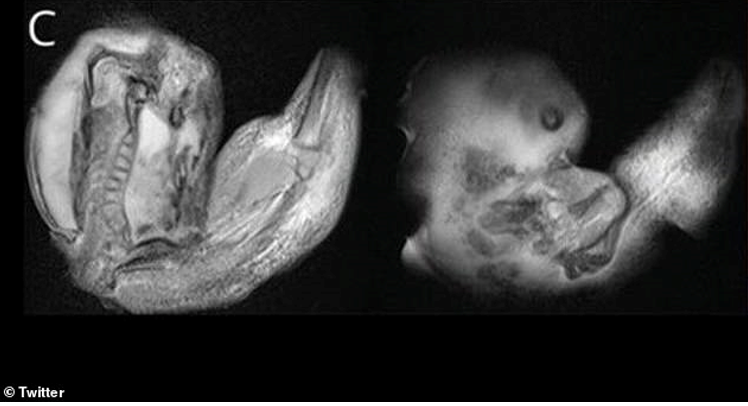Newsnomics AJAY ANGELINA reporter |
The recent report reveals that a fetus of a twin is surgically removed from the brain of a 1-year-old girl at
Huashan Hospital, shanghai in China.

The case study shows that the surgical removal was carried out, revealing a rare case of “intraventricular fetus-
in-fetu”: the fetus of the child's unborn twin was inside their skull. The tiny “fetiform mass” appears to have
grown upper limbs and even finger-like projections, but remained extremely undeveloped.
Doctors at Fudan University in Shanghai explained, “the fetus had developed upper limbs, bones and even
fingernails, meaning it likely continued growing for months while inside its sibling in the womb.”
The fetus was about four inches long - was only discovered when the parents took their daughter to hospital for scans because of enlarged head and problems with motor skills. When the doctors examined through CT scan, they were surprised to see her compressed brain with a build-up of fluid caused by a significant growth that could be found within the ventricles.
Dr Zongze Li, a neurologist at Huashan Hospial, Fudan University who treated the girl, said: 'The intracranial
fetus-in-fetu is proposed to arise from un-separated blastocysts.
“The conjoined parts develop into the fore-brain of the host fetus and envelop the other embryo during
neural plate folding” he said.



“Fetus-in-fetu” is the medical term for the rare phenomena that sees twins fuse together in the womb and
one develops physically inside another.
The studies explains that ‘Fetus-in-fetu’ cases such as recently happened are thought to occur during the very early stages of twin pregnancy when the cluster of dividing cells made by a fertilized egg, called the blastocyst, fail to separate properly.
Some have theorized that, “the healthy twin connects to the mother via the placenta, while the other latches
onto the twin's blood vessels. As the bigger twin grows, the smaller one becomes absorbed into their
abdomen.”
Other scientists have suggested that “it happens as a result of late cell division.”
The enviable fetus may continue to develop for several weeks and months inside its sibling — even forming
organs, bones and limbs explain the studies.
Fetus-in-fetu cases are outstandingly rare. The most reliable figure suggests they occur in every 500,000 births, although it’s unclear how that number was reached.
Surprisingly, it’s not the first time has been reported in the medical literature.
In December 2022, the latest tale was revealed in the American Academy of Neurology's journal that shows
the case of unnamed girl with problem of her motor skills. CT scan examinations revealed her unborn sibling was pressed against her brain. She had hydrocephalus, the build-up of fluid deep within the brain that can
cause an enlarged head, extreme sleepiness and seizures.
In 2019, Colombian doctors stunned to find fetus with arms and legs but no heart or brain still growing inside newborn's abdomen of Monica Vega of Barranquilla, who was 35 weeks pregnant when a scan showed her
baby might have a liver cyst. Doctors performed an emergency C-section at 37 weeks, removed the fetus
which arms and legs but no heart or brain.
Doctors said, “it had continued to survive a year after birth because it shared a blood supply with its sibling.”
In 2017, doctors in Thailand found three siblings connected to the host sibling via a single artery and vein,
inside the skull of an unborn girl. “Each had 'multiple well-developed organs', including a nervous, digestive
and respiratory system”, they said.
In 2015, Chinese doctors reported another unborn fetus inside the scrotal sac of its male twin of 20 days-old, who was taken to hospital after birth when his scrotum. The infant scans revealed a 'well-defined... mass'
within the scrotum, complete with bones and buds that doctors said would have formed into limbs.
The fetus was removed via surgery and its twin was discharged five days after surgery, having made a full
recovery.
Nevertheless, there have been other similar cases where the child has recovered well. In one study, published
in 1982, scientists at the London Hospital reported a 14-centimeter (5.5-inch) long fetus in a 6-week-old child who presented with enlarging head size. The removed fetus also had noticeable features like developing
limbs, a head, and a body.
“After the surgery, the child was said to have enjoyed an “excellent recovery”.
Fewer than 200 cases of the extremely rare condition have been reported in medical literature of which just 18 occurred inside the skull.
Fetus-in-fetu has also been detected in the pelvis, mouth, intestines and even the scrotum.










